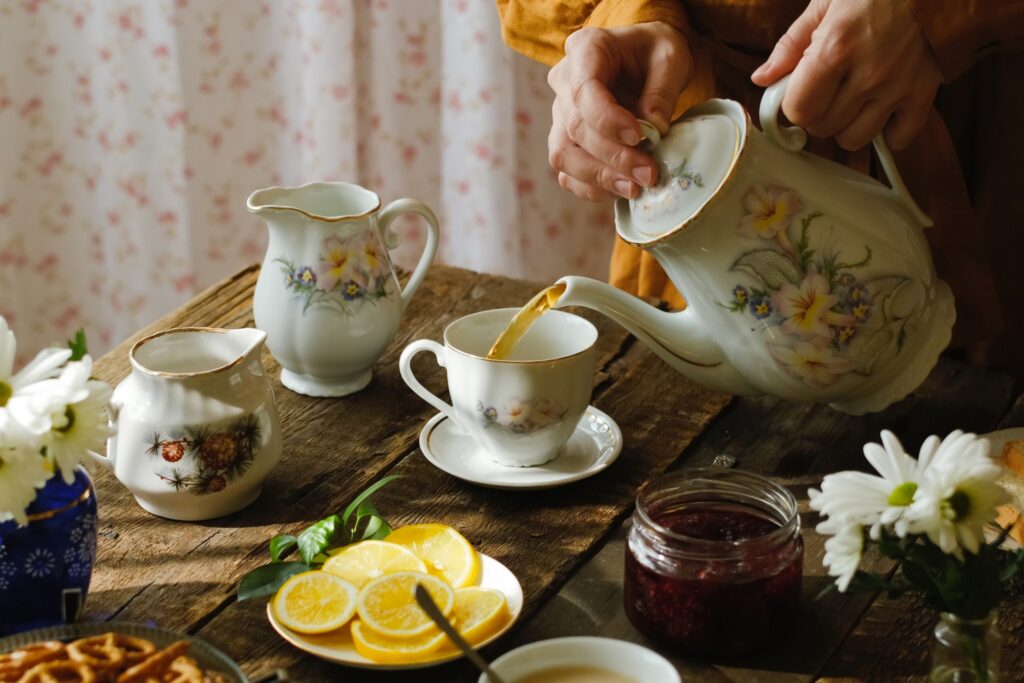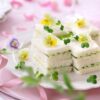
Imagine the gentle clink of fine china, the sweet aroma of freshly brewed tea wafting through the air, and the soft murmur of polite conversation. Tea parties have been a cherished social ritual for centuries, evolving from ancient ceremonial practices to modern-day gatherings. Let’s embark on a journey through time to explore the rich history of tea parties and their significance across cultures.
Ancient Beginnings: The Birth of Tea Ceremonies
The story of tea parties begins in ancient China, where tea was first cultivated over 5,000 years ago. Initially used for medicinal purposes, tea soon became a beverage of choice among the elite.
- The Tang Dynasty (618-907 CE): This period saw the emergence of formal tea ceremonies. Tea preparation and consumption became an art form, with specific rituals and etiquette.
- Popular Varieties: Green tea was the predominant type, often ground into a powder and whisked into a frothy drink.
- Social Significance: Tea ceremonies were a mark of refinement and cultural sophistication, often used in diplomatic meetings and scholarly gatherings.
The Spread of Tea Culture: From East to West
As trade routes expanded, tea and its associated customs began to spread across Asia and eventually to the West.
Japan: The Way of Tea
- Emergence of Chanoyu: The Japanese tea ceremony, known as Chanoyu or “The Way of Tea,” developed in the 12th century.
- Etiquette: Highly formalized, with every movement and gesture imbued with meaning.
- Cultural Traditions: Influenced by Zen Buddhism, emphasizing simplicity, respect, and mindfulness.
Europe: The Birth of Afternoon Tea
Tea arrived in Europe in the 17th century, quickly becoming a fashionable drink among the aristocracy.
- The Birth of Afternoon Tea: Credited to Anna, the 7th Duchess of Bedford, in 1840. She introduced the concept of having tea and light snacks in the afternoon to ward off hunger between lunch and dinner.
- Popular Varieties: Black teas like Earl Grey and Darjeeling gained popularity.
- Social Significance: Afternoon tea became a staple of British high society, a time for socializing and showcasing one’s finest china and manners.
Tea Parties in America: From Revolution to Social Gatherings
The relationship between America and tea is both tumultuous and endearing.
- The Boston Tea Party (1773): A pivotal moment in American history, where tea became a symbol of rebellion against British taxation.
- 19th Century Revival: Tea parties regained popularity as social events, particularly among women’s groups.
- Etiquette: American tea parties adopted many British customs but with a more relaxed atmosphere.
Modern Tea Parties: A Blend of Tradition and Innovation
Today, tea parties continue to evolve, embracing both traditional elements and modern twists.
- Themed Tea Parties: From Victorian-inspired gatherings to whimsical “Alice in Wonderland” parties, theme-based events have become popular.
- Children’s Tea Parties: A playful take on the tradition, often featuring colorful treats and imaginative settings.
- Global Influences: Incorporation of diverse tea traditions from around the world, such as Moroccan mint tea ceremonies or Russian samovars.
The Enduring Appeal of Tea Parties
Despite the passage of time and changing social norms, tea parties continue to hold a special place in our hearts. They offer a moment of respite in our fast-paced world, a chance to connect with others, and a link to centuries of tradition.
Whether you’re sipping from a delicate porcelain cup at a formal afternoon tea or enjoying a casual cuppa with friends, you’re participating in a ritual that spans cultures and generations. So the next time you raise your teacup, take a moment to appreciate the rich history brewing within.






